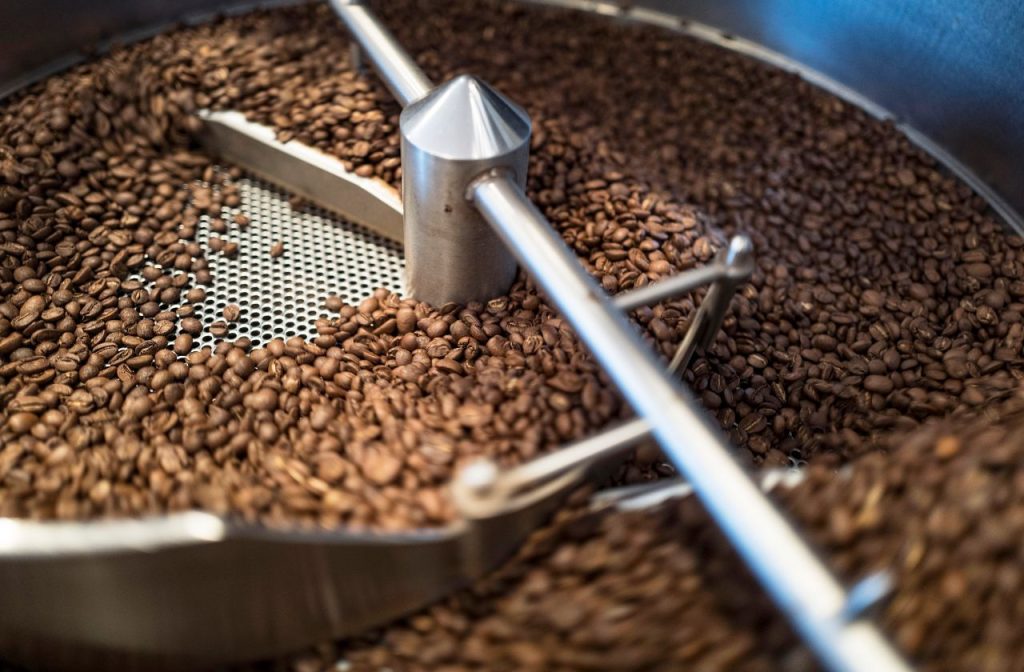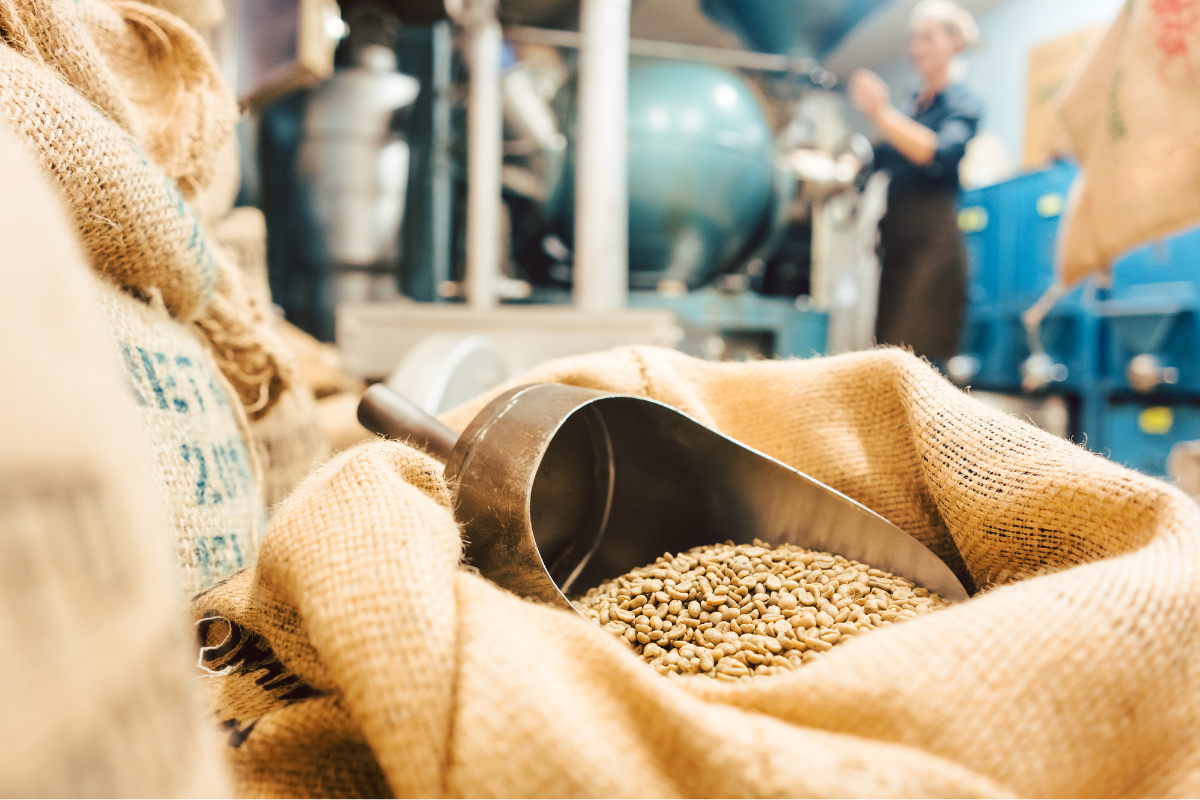Are Blended Coffee Beans Good?
The diverse world of coffee is full of many varieties and several different types of coffee beans. The most desirable coffee beans for enthusiasts are single-origin beans, but they are significantly more expensive than blends. Are blended coffee beans good? Are they worth drinking? Or should you only buy single-origin beans?
The truth is that blended coffee beans are like any other product; if the beans are good, and if they are processed, roasted, ground, and brewed well, they can be excellent. Let’s explore blended coffee beans to learn more about them, what makes them good, and what the potential problems with these beans are.
The Flavor Profile Of Blended Beans

The allure of blended coffee beans lies in their ability to offer a symphony of flavors, a complexity unattainable by single-origin beans alone. These blends, crafted by the skilled hands of master roasters, provide a sensory experience that is both rich and multifaceted.
Master roasters are like conductors of an orchestra, each bean a unique instrument contributing to the overall harmony. The creation of a blend starts with understanding the individual characteristics of each bean – its acidity, body, and flavor notes.
Balancing Acidity: Acidity in coffee can range from bright and citrusy to wine-like and tangy. A master roaster combines beans with varying levels of acidity to achieve a desired taste, ensuring that the acidity complements rather than overwhelms the overall flavor profile.
Controlling Body: The body of a coffee, its weight or thickness on the palate, is crucial in blending. A roaster may mix a bean with a lighter, tea-like body with one that has a heavier, creamier body to strike a balance that is pleasing to the palate.
Harmonizing Flavor Notes: This is where the true artistry comes in. Coffee can have a wide array of flavor notes, from fruity and floral to nutty and spicy. Blending allows roasters to combine these notes in a way that each sip reveals a new layer, a new aspect of the blend’s personality.
Weird Coffee Tip: Every variety of coffee beans has a unique flavor profile. Many coffee enthusiasts make their own blends by combining their favorite coffee flavors. To learn more about coffee flavor profiles, take a look at this article:
Exploring Coffee Bean Flavor Profiles: A Comprehensive Guide
Examples Of Popular Blends And Their Tasting Notes
Breakfast Blend: Typically a lighter roast with a smooth, balanced body. It often features bright, citrus notes coupled with a hint of sweet berries and a clean finish. Perfect for starting the day, this blend is both invigorating and easy on the palate.
Mocha-Java Blend: One of the oldest and most famous blends, it combines the earthy, chocolatey notes of Mocha beans from Yemen with the bright, wine-like acidity of Java beans. This blend is renowned for its rich body and complex interplay of spicy and sweet notes.
House Blend: Every roaster has their signature house blend, a testament to their roasting philosophy. These blends often aim for a middle ground in terms of roast level, body, and acidity, providing a well-rounded, versatile coffee.
You might find notes of caramel, nuts, and a subtle fruitiness in these blends, suitable for any time of the day.
The flavor profiles of blended beans are limited only by the imagination and skill of the roaster. Through careful selection and blending, roasters can craft coffees that offer a multi-dimensional tasting experience, turning each cup into a journey through the vast and varied landscape of coffee flavors.
Benefits Of Blended Coffee Beans

Blended coffee beans are not just about combining flavors; they offer tangible benefits that make them a preferred choice for many coffee lovers and cafes. Let’s explore the key advantages that these blends bring to the table.
Consistency in Flavor Across Different Batches and Seasons
Seasonal Variability Management: Coffee, being an agricultural product, is subject to the whims of nature. Factors like climate and soil composition can affect the flavor of a single-origin bean from one season to the next.
Blends circumvent this issue by combining beans from different origins, ensuring that the final product retains a consistent flavor profile year-round. This consistency is particularly important for coffee shops and commercial brands, where customers expect the same taste with every purchase.
Batch-to-Batch Uniformity: Even within a single harvest, there can be variations in flavor profiles. Blended beans can smooth out these inconsistencies, offering a stable and predictable taste. This uniformity is crucial for maintaining brand identity and customer satisfaction in the long run.
Tailoring Blends To Specific Brew Methods
Versatility in Brewing: Different brewing methods can accentuate different aspects of a coffee’s flavor. Blends can be specifically crafted to shine in particular brewing methods, whether it’s a rich and full-bodied espresso or a bright and light pour-over. This versatility allows consumers and baristas to have a more tailored coffee experience.
Customization for Flavor Preferences: Everyone’s coffee preference is unique, and blends offer the flexibility to cater to a wide range of palates. By adjusting the ratio and types of beans used, roasters can create blends that range from smooth and mellow to bold and intense, satisfying diverse tastes and preferences.
Cost-Effectiveness
Affordability: Single-origin beans, especially from exotic locations or with rare flavor profiles, can be quite expensive. Blends, on the other hand, often incorporate a range of beans, including more affordable varieties, without compromising on quality. This makes blended coffee more accessible to a broader audience, providing a high-quality coffee experience at a more moderate price point.
Economical for Roasters and Retailers: From a business perspective, creating blends can be more cost-effective for roasters and retailers. The ability to mix high-cost beans with more economical options and still produce a high-quality product can lead to better margins and pricing flexibility.
Blended coffee beans offer a harmonious balance of consistency, adaptability, and affordability. They stand as a testament to the ingenuity of coffee roasters who craft these blends, ensuring that every cup of coffee is a delightful and accessible experience for all. Whether you are a casual coffee drinker or a connoisseur, the benefits of blended coffee beans are worth exploring and enjoying.
Drawbacks And Problems With Blended Coffee

While blended coffee beans offer versatility and consistency, they also come with their own set of drawbacks. It’s important for coffee enthusiasts to understand these potential issues to make informed choices about their coffee consumption.
Masking The Unique Characteristics Of The Coffee
Dilution of Distinct Flavors: One of the most significant drawbacks of blended coffee is the potential for the unique characteristics of single-origin beans to be overshadowed. Single-origin beans are prized for their distinct flavor profiles, often reflecting the specific terroir of their origin.
When these beans are blended, their unique notes can be diluted, resulting in a loss of the individuality that makes single-origin coffees so special.
Homogenization of Taste: In pursuit of a balanced and consistent blend, the individual qualities of each bean might be compromised. This homogenization can lead to a coffee experience that, while pleasant, lacks the distinctive tastes and aromas that many coffee aficionados seek.
Risk Of Low-Quality Coffee beans
Quality Variability: Blends sometimes include lower quality beans, which can negatively impact the overall taste of the coffee. While not always the case, some manufacturers may use blending as a way to mask the inclusion of inferior beans, reducing costs at the expense of quality.
Transparency Issues: It can be challenging for consumers to ascertain the quality and proportion of each type of bean used in a blend. This lack of transparency makes it difficult to judge the true quality of the product and to understand what you’re really getting in each cup.
Ethical Challenges Of Blended Coffee
Complex Supply Chains: When multiple types of beans from various regions are used in a blend, tracing the origin of each bean becomes complicated. This complexity can obscure the supply chain, making it difficult to determine where and how each bean was grown.
Ethical Sourcing Concerns: For those who are conscientious about the ethical sourcing of their coffee, blends pose a challenge. The difficulty in tracing the origins of all beans in a blend can make it hard to ensure that each bean was produced under fair labor practices and environmental standards.
Certification Complications: Certifications like Fair Trade or Organic can be harder to maintain and verify in blended products. When beans from different farms and regions are mixed, ensuring that each bean meets the strict criteria of these certifications becomes a daunting task.
While blended coffee beans offer an array of benefits, they also come with certain drawbacks that cannot be overlooked. From the potential loss of unique flavor profiles to challenges in quality control and ethical sourcing, these issues highlight the importance of transparency and conscientious practices in the coffee industry.
As a coffee lover, understanding these drawbacks is crucial for making choices that align with your taste preferences and ethical considerations.
Conclusion
As we reach the end of our exploration into the world of coffee beans, it’s clear that both blended and single-origin varieties offer unique and valuable experiences to coffee lovers. From the artful complexity of blends to the distinctive purity of single-origin beans, each type of coffee has its place in the rich tapestry of coffee culture.
Whether you’re a seasoned coffee enthusiast or a curious newcomer, the world of coffee has something for everyone. Blended or single-origin, each cup holds a story, a flavor, and an experience waiting to be savored.







